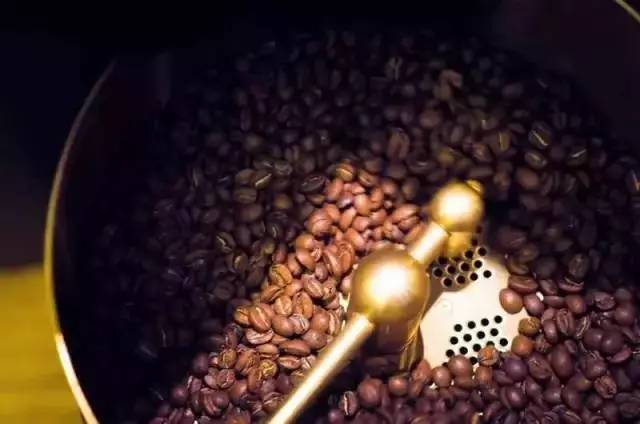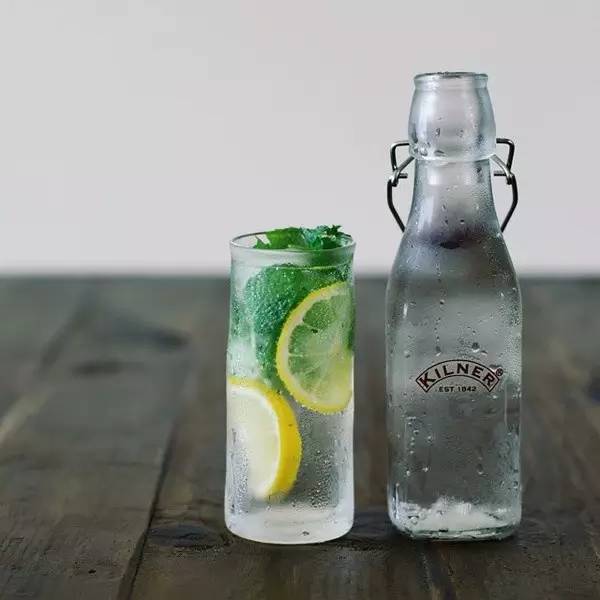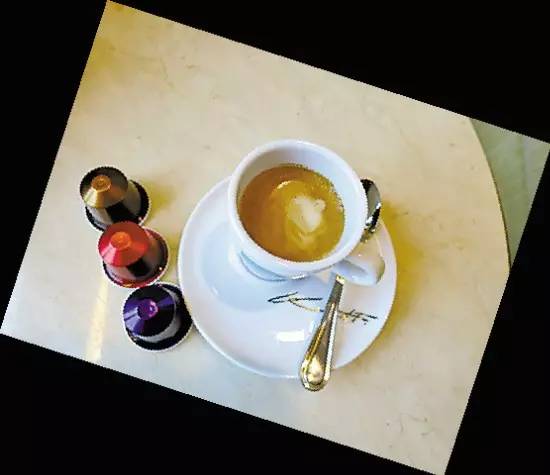Why do Italians take coffee to the extreme?
Follow the caf é (Wechat official account vdailycom) and found that Beautiful Cafe opened a small shop of its own.
The reason why Italians can take coffee to the extreme is mainly due to the following points:
1. "Italian baking" is not the mainstream of the local market
French roasting, Viennese roasting and Italian roasting are usually synonyms for deep-roasted coffee, and when it comes to deep roasting, you may think of Starbucks' bitter, burnt coffee. I think big chains choose deep-roasted coffee not because it is the most popular, but because the quality of this coffee is the easiest to control. No matter what quality beans are baked into black charcoal, the taste is the same. Add cream, milk, hazelnut or vanilla syrup, and you can't taste the coffee itself.
But in Italy, it's hard to find our traditional impression of deep-roasted coffee. At Tazzadoro, the "third wave" cafe in central Rome, you can choose the degree of baking you like, of which medium roasting is the most popular. To be honest, before drinking it, I always thought that Italian coffee must be extremely bitter, but unexpectedly, the bitterness of the coffee was so soft and the taste was so delicate and complex that it completely subverted my impression of espresso.

two。 The coffee culture here cannot be replicated.
Just like you can't eat authentic pizza in other cities, coffee has become a symbol of Italian culture, unique and unreplicable. In Italy, coffee roasters and cafes are all over the streets, and customers taste the same taste and quality of coffee every day. Low-quality coffee is not tolerated here, blenders devote themselves to blending, bakers specialize in baking, and baristas rely on their superb skills to make top coffee for every customer. this is the uniqueness of Italian coffee culture!
3. Here, coffee is a belief.
Stand in front of the bar, first taste the aroma of grease, and then swallow the rest of the coffee. 100% of the people who sit down to drink coffee are not Italians!
Walking down the street, every time I greet passers-by and say "Ciaos" in a strange tone, people respond coldly, but in the coffee shop, I get the warmest hospitality every time. But be careful, ordering is also a skill in Italy, and if someone orders a latte (believe me, you only get a glass of milk), he must be a gringo who doesn't understand coffee.
Fur, food, wine, history, art. These may be symbols of Italian culture, but in my eyes, what highlights the characteristics of Italian culture is the mellow coffee.
Five things you need to know about drinking coffee in Italy
one
You can't drink Espresso slowly. Drink it standing for two or three minutes.
▲, the Italian standing up drinking Espresso
Don't forget the original meaning of Espresso-"very soon"! This means that Italians often drink a glass of Espresso for only two or three minutes, and most people drink it directly at the bar. "Don't take ten minutes to sit down and drink an Espresso like an American," Marcello said.
In the morning, when you walk into a cafe where locals go, the crowd standing in front of the bar can make you a little overwhelmed. You only feel all kinds of cups and saucers and Croissant flying in the air. Never mind, wait for the person in front to make room after drinking, come forward and order, just like everyone else: stand, drink, and go. The price of each cup of Espresso usually ranges from 0. 7 to 1. 2 euros. If you want to sit down, you need to add a seat fee ranging from 1. 5 euros to 2. 5 euros.
two
Italians do not drink cappuccinos in the afternoon, especially after meals, because they think that a cup of Espresso after a meal will help refresh and digest, but the large amount of milk and foam in cappuccino will increase the burden of digestion.
three
Dinner will be followed by a Caff è Corretto with coffee and spirits.
The wines used by ▲ Caff è Corretto are not strictly restricted, but strong wines taste better when mixed.
After dinner, you can mix spirits such as grappa or amaro in Espresso and turn it into Caff è corretto. Italians think it helps digestion and sleep (yes, a glass of Espresso after dinner doesn't prevent them from falling asleep at all). Grappa (grape wine) is a brandy made from grape dregs of finished wine. After twice distillation, the alcohol content can reach more than 40 degrees.
Amaro is also a high wine, usually made from a variety of herbs, and the amaro varies from place to place. But the word means "bitter", so the wine also has a bitter taste. These wine lists are prone to headaches if you drink too much, but adding them to Espresso can help digestion.
four
Coffee and water?
In southern Italy, if you order coffee, you usually give away a small cup of water, which does not happen in the economically efficient north.
five
The sign "bar" can be seen everywhere in Italy. Don't think that Italians love to get drunk. In fact, Bar is a cafe. On the contrary, Caff è, which is synonymous with English Caf é, does not mean "coffee shop", but "coffee".
six
"Torrefazione"? There's a coffee roaster!
A coffee shop with the word "Torrefazione" says it has its own coffee roaster, which means the coffee should be of good quality, and you can buy coffee powder from there and take it home.
seven
Il Caff è, a magazine called Coffee.
This is a magazine founded in 1764 by a group of Enlightenment philosophers in Milan. They want to promote a more relaxed academic atmosphere and oppose classical and boring academic journals, such as cafes where you can also read the debates of the wise.
Important Notice :
前街咖啡 FrontStreet Coffee has moved to new addredd:
FrontStreet Coffee Address: 315,Donghua East Road,GuangZhou
Tel:020 38364473
- Prev

You can make a hot drink in a cafe at home, which is both interesting and delicious.
Following Cafe Review (Wechat official account vdailycom) found that Beautiful Cafe opened a small shop of its own at home can make fun and good drinks to share with everyone, let's learn! 1 lemon mint soda material: lemon slices, 2 slices, squeeze some lemon juice for use, mint leaves, 200ml, ice cubes. What to do: put the ice, lemon and mint together
- Next

Can capsule coffee be made directly? introduction of capsule coffee machine
Follow Cafe (Wechat official account vdailycom) found that Beautiful Cafe opened its own shop, capsule Coffee, simply put, capsule Coffee is a kind of coffee powder in a special aluminum capsule box.
Related
- What documents do you need to go through to open a coffee shop? coffee shop coffee shop certificate processing process
- How to purchase Coffee beans in small Cafe how to choose a suitable supplier for domestic Coffee supply Company
- How to drink Starbucks Fragrance White Coffee? how to make Australian White Coffee? what Italian coffee beans are recommended?
- The Story of Flora Coffee: the name of Flora Coffee Bean and the implication of the Flowers on Florna Coffee
- How much does a cup of coffee cost? How much is the profit of a cup of coffee? What is the profit of the coffee shop in a year?
- Yunnan small Coffee, known as "fragrant Coffee", introduces the characteristics of Alpine Arabica Coffee producing areas in Yunnan, China
- 2023 latest Starbucks full menu price list how much is a cup of Starbucks coffee what is better to drink the most popular hot and cold drinks recommended
- Starbucks different kinds of Coffee Price list Starbucks menu 2023 Top Ten Best drinks in Starbucks
- Starbucks Spring praise Comprehensive matching Coffee Bean theme Story Packaging implication and taste description
- The cost of a cup of coffee latte American coffee cost price and selling price

